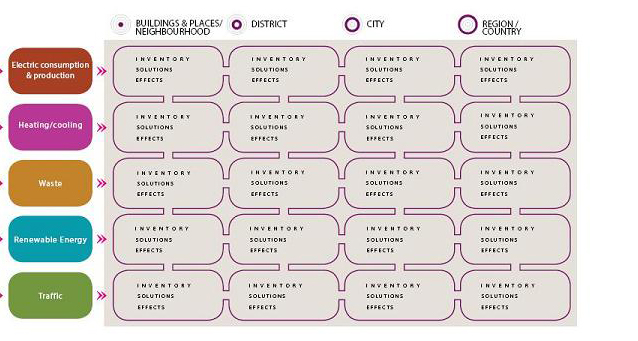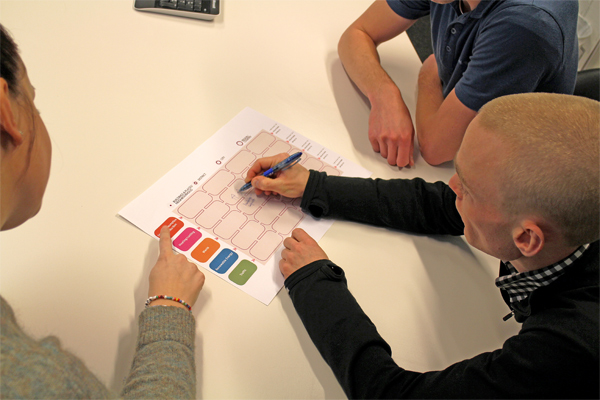The STEP UP team in Gothenburg has been trying out a model for Energy Strategy Mapping: a matrix approach which has previously been used for social impact assessments will now be tested for energy planning on different city scales.
The Gothenburg model for Social Impact analysis is a tool that supports and highlights important human aspects in urban development. It can be used as an aid to show assets, needs and insufficiencies within the social dimension. It can also be used to describe the impact of any proposed measure. The tool was developed within the Gothenburg S2020 framework (Socially Sustainable Development in 2020), an assignment that the Social Resource Department was given by the city council with the purpose to give social issues the same status in municipal planning as economy and ecology.

Gothenburg - Energy Matrix
At the City Planning Office at the City of Gothenburg, the planners learned about the matrix and appreciated its simplicity and effectiveness. They decided to try to use the model on other areas, such as energy mapping.
“Energy issues are most often not our first priority in planning, so this has been a good way to raise these topics”, says Anna Svensson, Project Manager at the strategic department at the City Planning Office in Gothenburg. “You get a new kind of overview of the energy flows; both at district level and in terms of the whole town. I also think that by using the energy matrix, we will be able to work more clearly towards the goals contained in the SEAP.”
Rasmus Einarsson, Energy Systems Researcher at SP Technical Research Institute of Sweden, and his research colleague Magnus Brolin are working with the City of Gothenburg and Älvstranden Utveckling AB (River City Development inc) on several STEP UP tasks. Normally the researchers don’t use this matrix but they realised that it would be practical and easy to relate to in this case; a tool for visualisation that the partners already had and were familiar with.
“The matrix helps structuring matters by dividing them thematically and spatially, and showing what scales we are talking about. It’s a tool to structure analysis and discussion about problems, possible solutions and their effects”, says Rasmus Einarsson.
At the City Planning Office, the geographical scale of everyday work is often on a local level: buildings, places, neighborhoods. However energy planning has traditionally been communicated on the scale “year and city”. One of the priorities in the STEP UP project is to integrate energy planning into early stages and into all scales of city planning. In this perspective, the matrix can help to highlight what level the effects can be found, not necessarily on the same level as the measures that have been made.
The energy system researchers have adapted the matrix slightly to fit in with energy mapping.
Thematically they use themes such as electricity consumption and production, district heating and cooling, waste, renewable energy and traffic. On the spatial scale, their work will mainly take place on the levels “district” and upwards, so they have merged the two lowest levels; “buildings and places” and “neighborhoods” into one geographical level. The level “region” has been expanded to also include the whole country; this was necessary as the energy system relies on exchange of electricity as well as raw materials across regional and national borders.

The Energy Matrix in use.
“One of the great benefits of this tool is that it helps us talk over disciplinary boundaries. For instance, at our latest meeting with the City of Gothenburg, we talked about matters like local solar panels, minimized use of energy, whether small scale production of energy might be suitable in this area, distance to the district heating grid in new districts, treatment of surface water runoff, behavioral changes, storage of energy, how microclimate is affected by planting of trees... Questions concerned solutions, costs and more; things that are related to each other in some way, but need to be approached in a structured way” said Rasmus Einarsson.
Since the matrix is not at all limited to one specific area or city, the STEP UP partners plan to use it outside Gothenburg as well:
“This can be a great tool for our joint future workshops with the companion cities”, said Anna Svensson.
Find out more about Gothenburg’s climate strategy here.
Gothenburg’s long term vision can be found here.